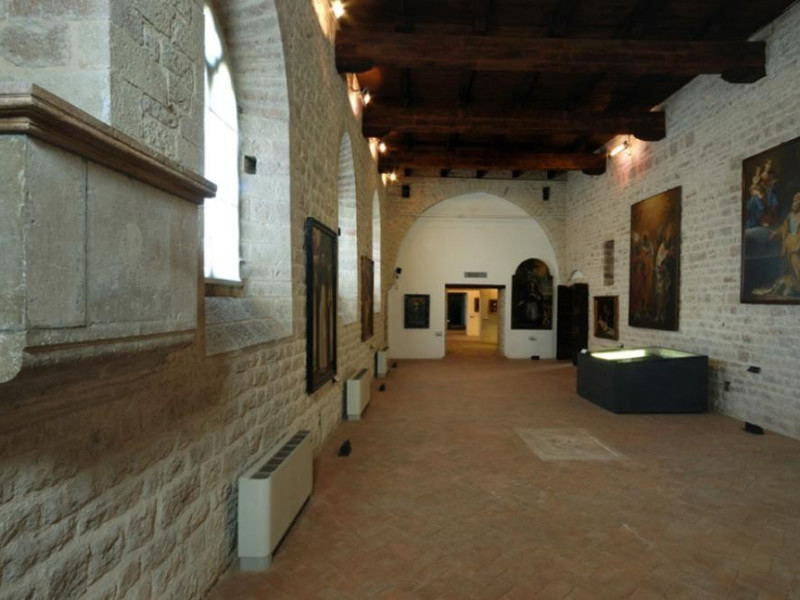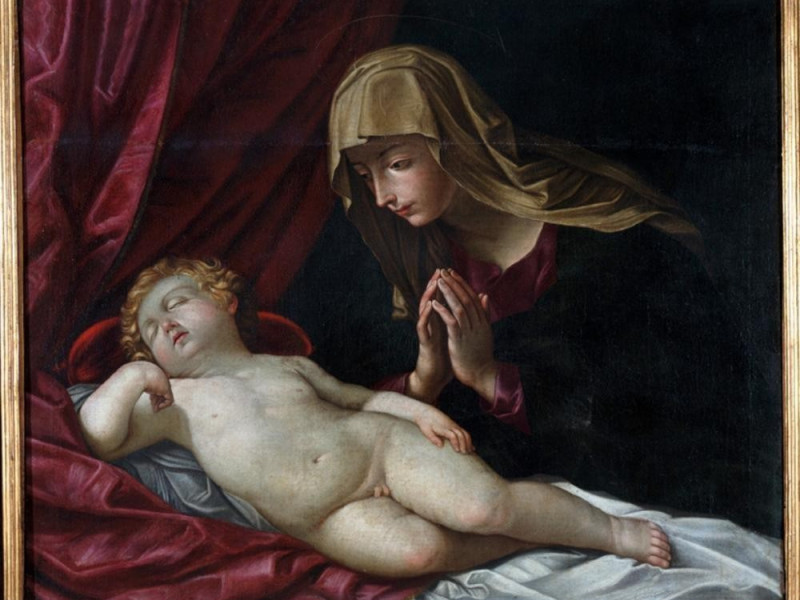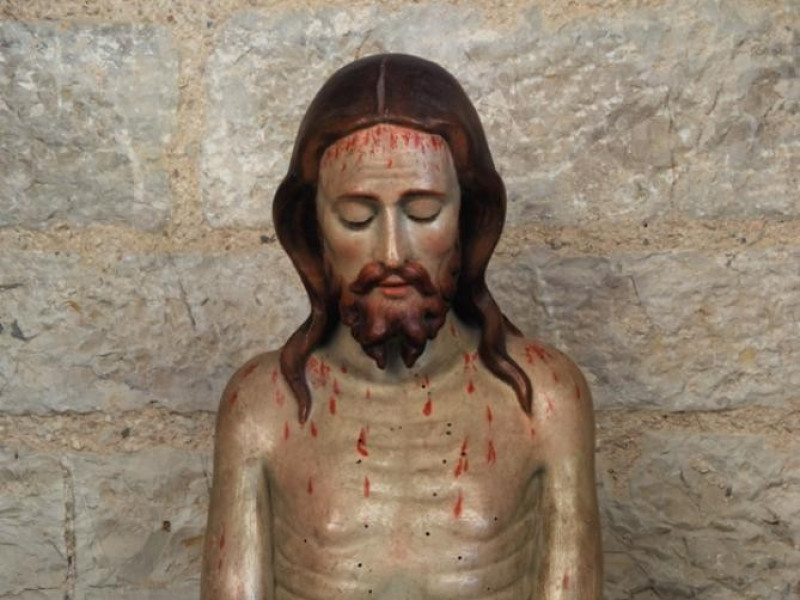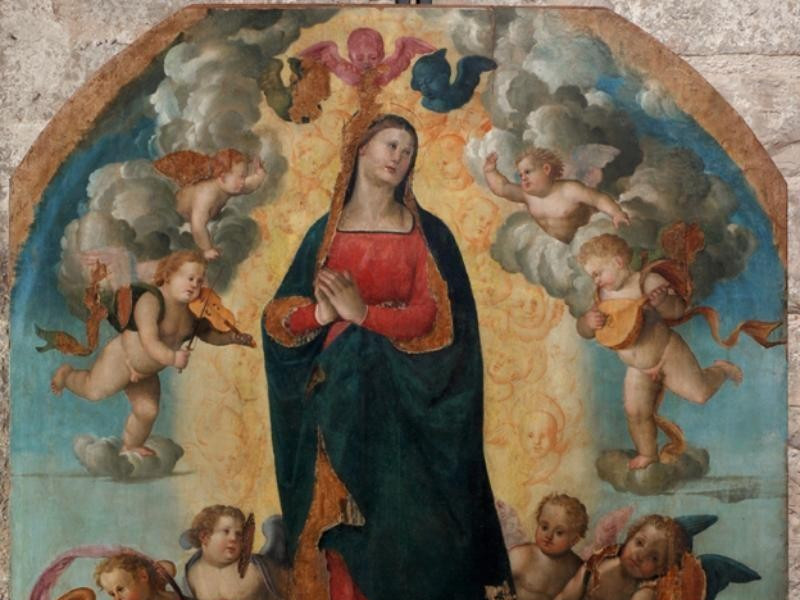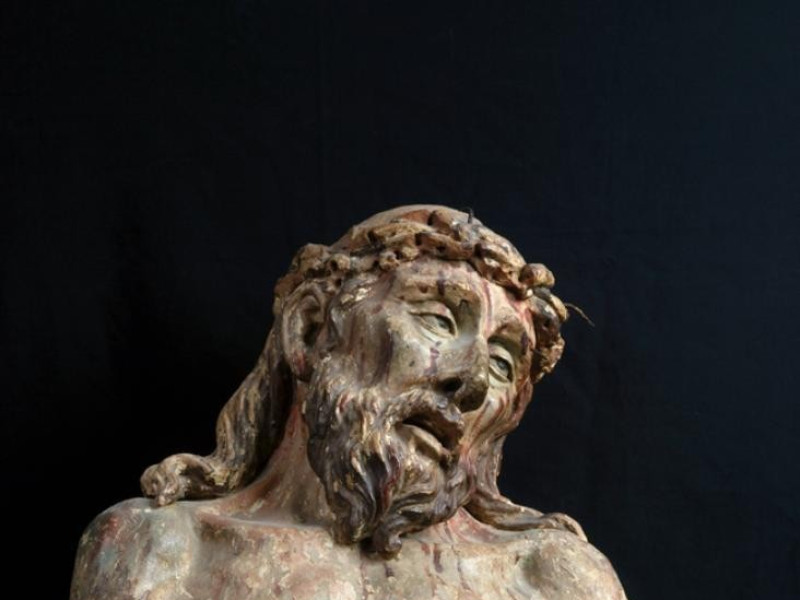Museo Diocesano
Diocesan Museum The Museo Diocesano is in the historical city center of Gubbio, between the Cathedral of the Santi Giacomo and Mariano and Palazzo Ducale, built by the order of Federico da Montefeltro at the end of the 14th century. The Museum display is organized inside the Palazzo del Capitolo dei Canonici. The original palace was built in the 13th century, but in later times has been enlarged. It hosted the Chapter of the Canons, whose role was to celebrate the liturgical functions in the Duomo, and whose community life was regulated by the rule of St Ubald. Inside the architectural complex, a unique and fascinating structure, the visitor can follow a journey back in time to the origins and through the history of the ancient Diocese of Gubbio. Marbles from ancient Roman, Byzantine and Early Medieval Ages alternate in the spaces with paintings from the 14th and 15th centuries—periods in which the local artistic production was particularly flourishing—and precious ecclesiastical furnishings and liturgical vestments. The collection is composed of objects coming from the Cathedral, from other religious buildings in town and the periphery, and of some pieces of private property. In the archaeological section there are Roman funerary steles, gravestones and slabs. Among the paintings, the Plates of Mello from Gubbio—an artist active around 1330-1360—depicting the Madonna with Child, distinguish themselves. It is evident that much is owed to Ambrogio Lorenzetti, who was also a frequent reference point for other local painters, so much so as to draw the conclusion that there must have been other works of the Sienese painter in the area, now lost. The 15th century is well represented by works of painters in the circle of Ottaviano Nelli and by a fresco cycle with scenes of the Passion of Christ, coming from the Crypt of the Church of Santa Maria dei Laici, while, the subsequent centuries are represented by works of Benedetto Nucci, Ignazio Danti, Pomaracio, Francesco Allegroni and Sassoferrato. Of particular interest is the Cope of Marcello II, Bishop of Gubbio between 1544 and 1555, of Flemish manufacture from the 15th century, probably executed based on a design of Giusto from Gand. To complete the collection, there are a series of reliquaries and ecclesiastical furnishings, silverware and Bishop insignias including a Silver Reliquary of the True Cross of Giovanni Giardino, whose design is preserved in the Art Library Kunstbibliothek of Berlin. From Via Federico da Montefeltro it is possible to note, behind a fence, a huge wine wooden barrel of the 15th century. It had the capacity to contain 200 hectoliters—almost 387 barrels—and was called Botte dei Canonici.

